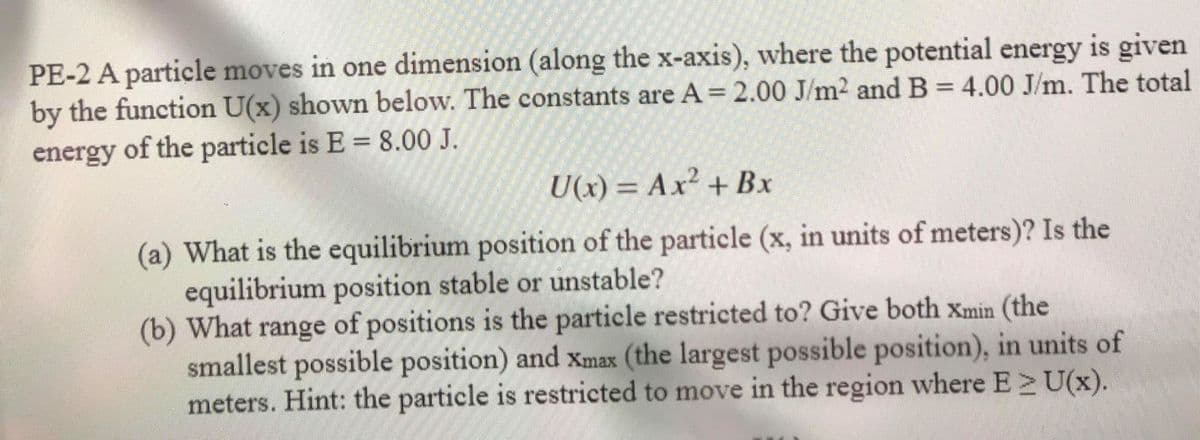PE-2 A particle moves in one dimension (along the x-axis), where the potential energy is given by the function U(x) shown below. The constants are A = 2.00 J/m2 and B = 4.00 J/m. The total energy of the particle is E = 8.00 J. %3D %3D U(x) = Ax² + Bx %3D (a) What is the equilibrium position of the particle (x, in units of meters)? Is the equilibrium position stable or unstable? (b) What range of positions is the particle restricted to? Give both xXmin (the smallest possible position) and xmax (the largest possible position), in units of meters. Hint: the particle is restricted to move in the region where E U(x).
PE-2 A particle moves in one dimension (along the x-axis), where the potential energy is given by the function U(x) shown below. The constants are A = 2.00 J/m2 and B = 4.00 J/m. The total energy of the particle is E = 8.00 J. %3D %3D U(x) = Ax² + Bx %3D (a) What is the equilibrium position of the particle (x, in units of meters)? Is the equilibrium position stable or unstable? (b) What range of positions is the particle restricted to? Give both xXmin (the smallest possible position) and xmax (the largest possible position), in units of meters. Hint: the particle is restricted to move in the region where E U(x).
Related questions
Question

Transcribed Image Text:PE-2 A particle moves in one dimension (along the x-axis), where the potential energy is given
by the function U(x) shown below. The constants are A=2.00 J/m² and B = 4.00 J/m. The total
%3D
energy of the particle is E = 8.00 J.
U(x) = Ax² + Bx
(a) What is the equilibrium position of the particle (x, in units of meters)? Is the
equilibrium position stable or unstable?
(b) What range of positions is the particle restricted to? Give both Xmin (the
smallest possible position) and xmax (the largest possible position), in units of
meters. Hint: the particle is restricted to move in the region where E U(x).
Expert Solution
This question has been solved!
Explore an expertly crafted, step-by-step solution for a thorough understanding of key concepts.
This is a popular solution!
Trending now
This is a popular solution!
Step by step
Solved in 3 steps
